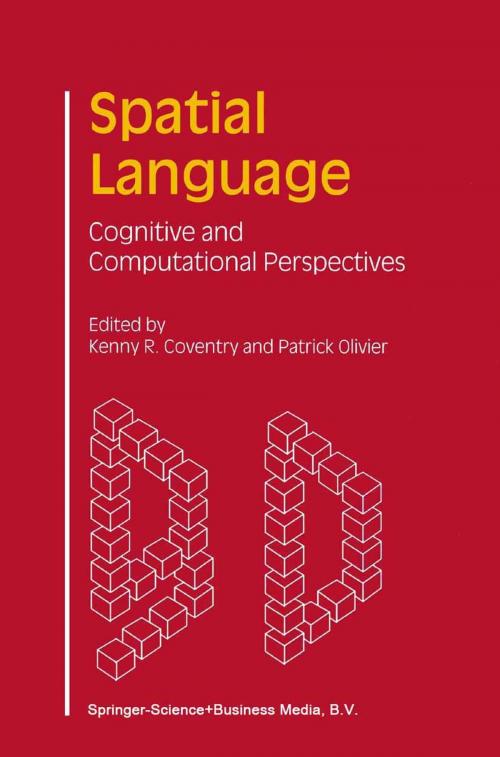Spatial Language
Cognitive and Computational Perspectives
Nonfiction, Computers, Advanced Computing, Artificial Intelligence, Health & Well Being, Psychology, Cognitive Psychology| Author: | ISBN: | 9789401599283 | |
| Publisher: | Springer Netherlands | Publication: | March 14, 2013 |
| Imprint: | Springer | Language: | English |
| Author: | |
| ISBN: | 9789401599283 |
| Publisher: | Springer Netherlands |
| Publication: | March 14, 2013 |
| Imprint: | Springer |
| Language: | English |
People constantly talk to each other about experience or knowledge resulting from spatial perception; they describe the size, shape, orientation and position of objects using a wide range of spatial expressions. The semantic treatment of such expressions presents particular challenges for natural language processing. The meaning representation used must be capable of distinguishing between fine-grained sense differences and ambiguities grounded in our experience and perceptual structure. While there have been many different approaches to the representation and processing of spatial expressions, most computational characterisations have been restricted to particularly narrow problem domains. The chapters in the present volume reflect a commitment to the development of cognitively informed computational treatments of spatial language and spatial representation. Therefore the chapters present computational work, empirical work, or a combination of both.
The book will appeal to all those interested in spatial language and spatial representation, whether they work in artificial intelligence, cognitive science, cognitive psychology or linguistics.
People constantly talk to each other about experience or knowledge resulting from spatial perception; they describe the size, shape, orientation and position of objects using a wide range of spatial expressions. The semantic treatment of such expressions presents particular challenges for natural language processing. The meaning representation used must be capable of distinguishing between fine-grained sense differences and ambiguities grounded in our experience and perceptual structure. While there have been many different approaches to the representation and processing of spatial expressions, most computational characterisations have been restricted to particularly narrow problem domains. The chapters in the present volume reflect a commitment to the development of cognitively informed computational treatments of spatial language and spatial representation. Therefore the chapters present computational work, empirical work, or a combination of both.
The book will appeal to all those interested in spatial language and spatial representation, whether they work in artificial intelligence, cognitive science, cognitive psychology or linguistics.















